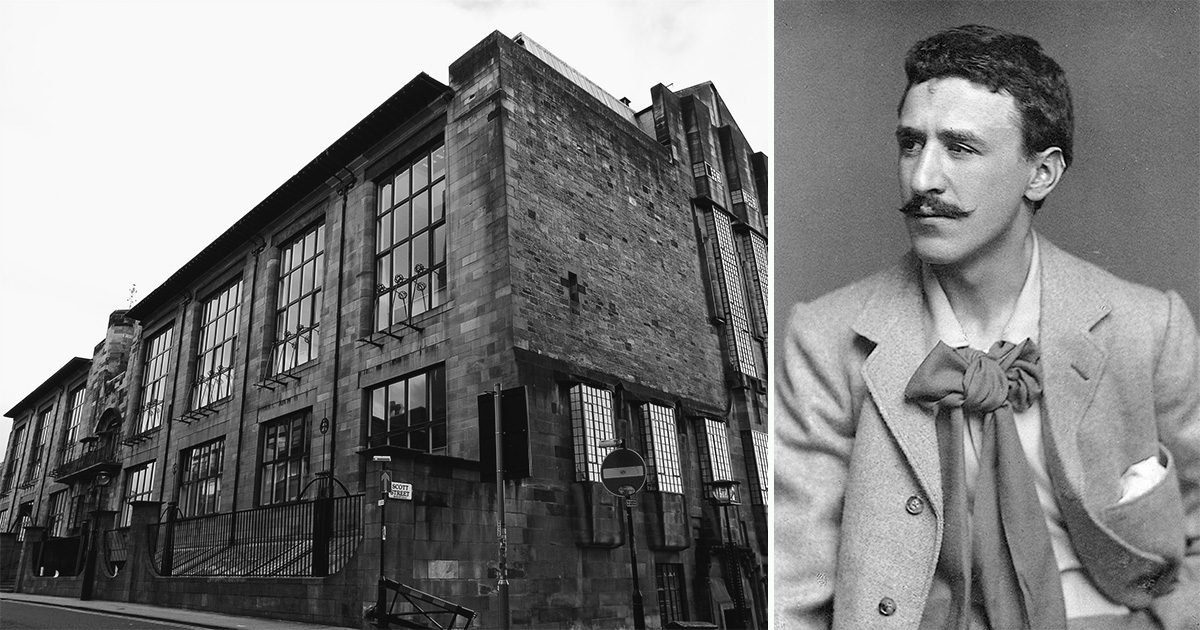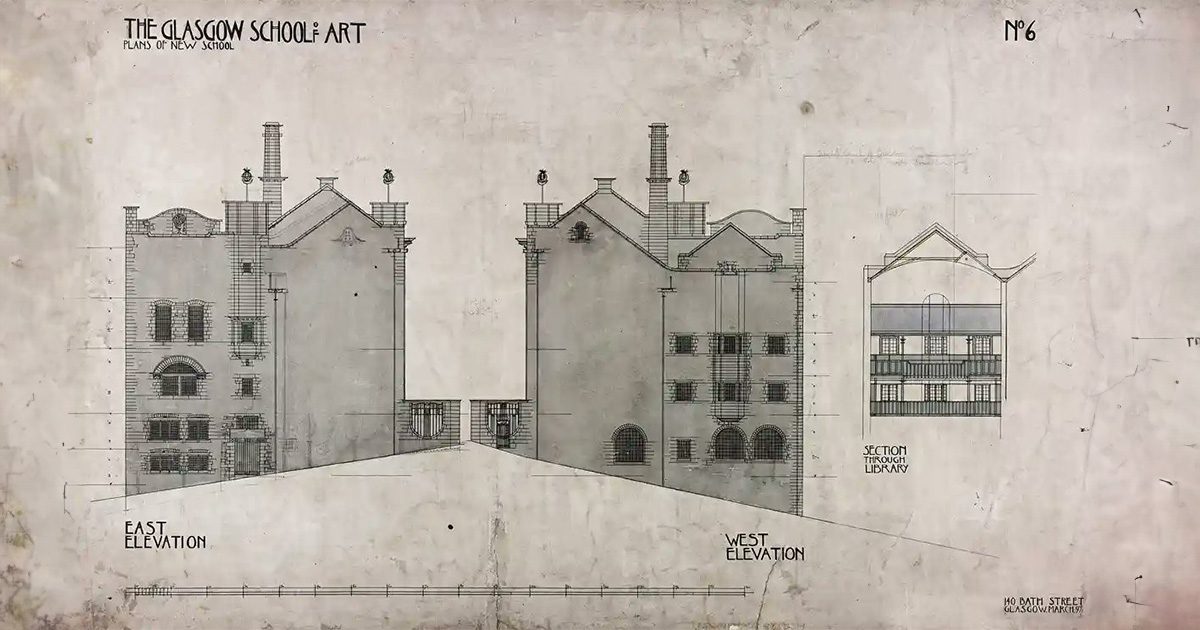Keppie at 170: Glasgow School of Art (1 of 12)
- Written by
- David Ross
- Listed in
- Posted on
- 2nd Feb 2024

Image courtesy of Natalie Tweedie / Nebo Peklo
Recognised as world-class architecture, the Glasgow School of Art is Mackintosh’s masterpiece. The contention has been that Mackintosh designed the art school himself, but that John Keppie, as the partner in charge, and architect of record, took credit for it at the time and marginalised his assistant.
In 1893, the head of the school, Francis Newbery, and chairman of the governors, James Fleming, visited the schools at Birmingham and Manchester to gain an appreciation of the accommodation required. At the time, the School of Art was a branch of the South Kensington Department of Science and Art. It was crammed into a section of the McLellan Galleries.
By March 1896, the governors had raised £21,000 towards the project, with £14,000 to be spent on the building. Newbery realised this was not a large sum of money, and in his brief of June 1896 asked for a ‘plain building’. The winner of a design competition would obtain the commission at a fee of 5% of the construction cost.


Honeyman and Keppie were appointed on 13th January 1897 for the first phase of the building, and construction work took place from late 1897 to December 1899. It had to be complete before the end of 1899 to obtain a £500 grant from the South Kensington department of science and art, which would cease to have the ability to make such an award thereafter.
The second phase had to wait until further funds became available. This was designed between September 1906 and May 1907, with construction taking place from 1907 to 1909. It has often been speculated that Francis Newbery made sure that his protege Mackintosh designed the building. He was one of three judges who would all have been sympathetic to Honeyman and Keppie in their loss of the controversial Kelvingrove Art Gallery appointment in 1892.
The timing of the competition gives another clue to Newbery’s tactics. The most inconvenient time to launch a major competition is June, when everyone is about to go on holiday, and for Victorian architects this could mean several weeks in Britain or abroad on sketching tours. Of the eleven firms which submitted design entries, two were from governors of the school – JJ Burnet and WF Salmon – who resigned so that they could enter, and four were from practices associated with Honeyman and Keppie.

Image courtesy of The Hunterian Collection

The formal appointment for phase two of Glasgow School of Art came 117 years ago today, on 1st February 1907. Mackintosh was now a partner of Honeyman, Keppie and Mackintosh and, as such, was not under the supervision of John Keppie. This, and a change of brief, gave him the opportunity to revise the design and produce more sophisticated west elevation and library proposals.
The completion of the Glasgow School of Art marked the end of an era. Between 1910 and 1913, only six or seven new projects could be attributed to Mackintosh, and none of these were of any consequence. The 1909 Finance Act, and David Lloyd George’s ‘People’s Budget’ practically halted property development.
Mackintosh withdrew from the practice in the second half of 1913, although the partnership was not dissolved until June 1914. In 1914, Francis Newbery painted a group portrait of the building committee of the Glasgow School of Art, and on the left of it, he added Mackintosh, who had become a director of the school as the representative of the Glasgow Institute of Architects.

Image courtesy of GSA Archives
“I first pitched up at Renfrew Street in 1985. After a few years of bizarre and thankfully short-term employment in sectors as diverse as undertaking and ice-cream-making (a long story…I’ll save it until I know you better) I found myself accepted as a part-time first year architecture student. I didn’t know it at the time, but Mackintosh had also studied this way, as ‘an apprentice’.
For six years, I developed and grew as an individual, constantly being inspired by the uniquely creative environment around me. I remember hot afternoons in the Hen Run sketching the city in front of me and in the process, gradually understanding the fabric of all cities. How order, balance, character, diversity, scale, proportion, and connection are the prism through which successful cities manage inevitable change.
I remember the weekly lectures in the most uncomfortable lecture theatre I’d ever sat in. Uncomfortable only because dozing off on its unrelenting wooden seats was impossible. It hadn’t occurred to me then that that might have been the point, and that most of the things said to me in that room I’d actually remember.
And of course, I vividly remember the first time I walked through the doors of the library. It was the first time I’d experienced what architecture was capable of. I knew the building – and that room in particular – like the back of my hand, yet I saw something different every time I went into it. Perhaps in the way the changing light catches a detail or when it’s more contemplative spaces almost appeared to comfort those who might be struggling with their studies.
Mackintosh was a partner of the design firm I’m now a director of. I’m incredibly proud of being part of such a lineage. The Glasgow School of Art is a vital part of our practice history and heritage. To see the building in flames twice in only four years was absolutely heartbreaking.
It was – and hopefully will be again – the greatest building in the world, in my opinion, although admittedly I haven’t been in them all. It wouldn’t matter. The others couldn’t compete. The building is a part of my soul. More than any individual, it has influenced the type of person I am today.”

Image courtesy of GSA Archives